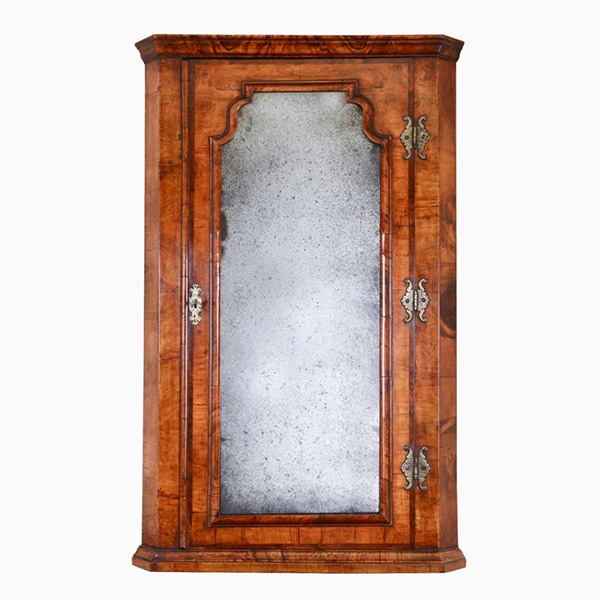A fine burr walnut George I dressing mirror
Circa 1715-25 England.
Sold
Request Information
Follow Us
A fine burr walnut George I antique dressing mirror
An extremely rare and fine George I burr walnut dressing mirror raised on ball and bracket feet.
The drawer linings of this piece redefine the meaning of fine linings (see images). The burr walnut case is finely lined with feather-banding as are the one long over three short drawers. The shaped mirror is of typical Queen Anne/early George I design and bordered with an intricate cross grain moulding of walnut.
Dressing mirrors of this fine quality from the first quarter of the 18th century are extremely rare and rarer still on ball and bracket feet. The ball and bracket foot was only in production for a very short period of time and has been noted on only a handful of exceptional pieces all made in London by some of the great cabinet makers of the 18th century to include, Peter Miller and Coxed and Woster.
Attribution
London made most likely from St Pauls Churchyard
Condition
Fabulous condition, great colour. Later mirror plate
Dimensions
Height 82 cm
Width 46cm
Depth 22cm
Provenance
Private Collection
Literature
Adam Bowett, Early Georgian furniture – ‘Dressing mirrors’ Page 267 onwards
PREVIOUSLY SOLD
No Results Found
The page you requested could not be found. Try refining your search, or use the navigation above to locate the post.
No Results Found
The page you requested could not be found. Try refining your search, or use the navigation above to locate the post.
YOU MAY ALSO LIKE

Queen Anne Walnut Corner Cupboard with Bevelled Mirror Plate
A truly remarkable find in original condition. To the door a shaped soft bevelled mirror plate is framed by a cross-grain molding of typical queen Anne design which is further cross-banded, feather-banded and edged to the opening with a single de-molding.

Queen Anne Walnut Corner Cupboard with Bevelled Mirror Plate
A truly remarkable find in original condition. To the door a shaped soft bevelled mirror plate is framed by a cross-grain molding of typical queen Anne design which is further cross-banded, feather-banded and edged to the opening with a single de-molding.










